2016 Post-Mortem will take a look at each position, how it fared in 2016, and where the team is set to go in the future.
| Player | BA | OBP | SLG | Comb. WAR |
|---|---|---|---|---|
| AJ Pierzynski | .219 | .243 | .304 | -1.3 |
| Tyler Flowers | .270 | .357 | .420 | 1.4 |
| Anthony Recker | .278 | .394 | .433 | 0.6 |
| TOTAL | .252 | .321 | .378 | 0.7 |
A.J. Pierzynski
After a surprisingly good 2015 in which he hit .300/.339/.430, the 39-year old Pierzynski was re-signed to a one year, $3M deal for 2016. At the beginning of the season, manager Fredi Gonzalez was committed to Pierzynski as the starter, despite the presence of another viable option who was hitting more productively. Presumably, this was linked to Pierzynski’s 2015 season. The problem with the nice surprise of 2015 was that it was a surprise for a good reason – most catchers at 38 are either done or quickly on their way there. Unsurprisingly, in 2016 Pierzynski acted his age. The offense plummeted to a career-worst level, the trajectory he was headed for prior to his arrival in Atlanta. The defense, never a real asset to his game, remained terrible. By most WAR estimates, Pierzynski was the least helpful player on the 2016 Atlanta Braves.
That’s not completely his fault. After the signing of Tyler Flowers, Pierzynski never should have been starting as many games as he did early in the season. He started 14 of the team’s 23 April games. He started 13 of 28 games in May, essentially a 50/50 split despite some atrocious statistics. After Gonzalez’ dismissal, manager Brian Snitker made the obvious choice to play Pierzynski less frequently, a big reason the team improved. He would start just 32 more times over the final 4 months, a rate fairly normal for a backup catcher.
Pierzysnki hasn’t decided to retire yet, if it’s even a choice for a 40-year old free agent coming off the worst year of his career, but if he does, he can look back on a pretty nice career. He collected over 2000 hits and 400 doubles and won a World Series as a starter with the 2005 White Sox (and drove in 3 runs in that Series). He was a two-time All-Star, a Silver Slugger, and someone even once voted for him in an MVP race. He’s 40th in MLB history in times hit by pitch (129), a testament to not only his hitting style but his at times contentious personality. Only 7 men have played more games as a MLB catcher than Pierzynski’s 1936, and only 3 recorded more putouts at the position than his 12600. In 1998, he was the 6th youngest player in the AL. In 2016, he was the 7th oldest in the NL. That’s a pretty full career, one to be proud of. While it’s possible Pierzynski could play again, it isn’t likely, and it’s even less likely his next game is in a Braves uniform, hence this paragraph’s coda-esque tone. 2016 was a mess, but he wasn’t the reason the team failed to make the playoffs. Thank him for his pleasant 2015 and wish him good luck for the next stage in his life, whatever that might be.
Tyler Flowers
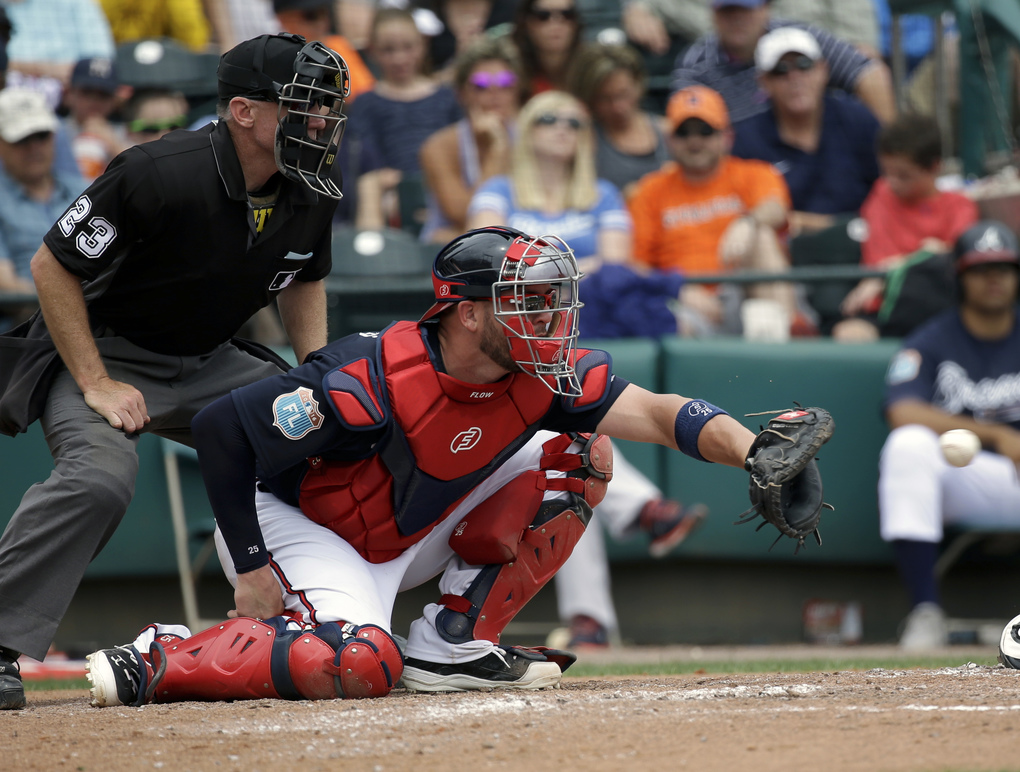
Signed as a free agent last offseason to a 2 year, $5.3M deal, some observers expected Flowers to get the lion’s share of starts behind the plate. They recognized Pierzynski’s 2015 for what it was, and saw that Flowers would likely be as good a hitter, but with the benefit of substantially better defense. Fredi Gonzalez didn’t see things that way, as we saw above, but eventually, under Brian Snitker, he found himself playing more regularly, leading the team with 76 starts.
Flowers’ glove was as good as advertised. Known as an excellent pitch-framer, Flowers again lived up to the reputation. Stat Corner’s catcher framing metrics estimate that Flowers was worth 13.3 runs more than an average catcher on the basis of his pitch-framing alone, good enough to rank 4th in the majors this year. Baseball Prospectus’ method was in agreement, rating him 12.3 runs over average. Flowers’ overall defensive value was curbed by an abysmal showing when it came to holding runners, but it didn’t negate his framing (the most valuable measurable aspect of catcher defense).
The big surprise was Flowers’ bat, which was surprisingly good. Not once in Flowers’ White Sox career had he been even a league-average hitter. He had pop, twice reaching double digits in home runs, but his value at the plate was weighed down by his inability to reach base. A .300 OBP is by no means impressive or even league average, and Flowers had not managed even that over a full season in his career and not in a partial one since 2011. That makes his .357 OBP in 2016 all the more stunning.
When you dig into it a bit deeper, you see that he definitely benefited from luck. Flowers had a .366 batting average on balls in play, a statistic that has proven to be random and uncontrollable from year-to-year except possibly among speedsters. It’s not all luck, but when a BABIP deviates wildly from the .300 league norm, you have to accept that balls fell in more than they had before or can be expected to again. When I said it wasn’t all luck, however, I meant it. Flowers was better at the plate than he had been in Chicago. He hit line drives at the 2nd highest rate of his career. He squared the ball better than ever, sending 37% of balls in play to CF, a career high. His pull rate was 35%, after never having had a pull % under 40% as a MLB regular. He also hit the ball harder than ever before. According to the Soft/Medium/Hard designations applied to each batted ball by Baseball Info Solutions, Flowers’ Hard-Hit rate was 43.8%. Among players who batted at least 300 times this year, only 3 had as high a fraction of their batted balls marked “hard-hit”: Ryan Howard, David Ortiz, and Trevor Story. Another 43.3% of his batted balls earned the “Medium” grade, leaving only 12.9% of his batted balls marked as “soft contact”, the lowest rate of his career.
At age 30 during the 2016 season, Flowers probably shouldn’t be expected to necessarily maintain his offensive breakout. However, I do think it’s very possible his improved approach at the plate can be somewhat maintained. And if he regresses, his defense should remain strong – pitch framing is a skill that ages somewhat well, as Jose Molina (the godfather of pitch framing) remained effective well into his late 30’s. In short, Flowers is a bargain for what he’s being paid – he’s owed $3M for 2017 and Atlanta holds a $4M option for 2018, and at present time he’s the team’s best option going forward. That being said, he might have benefited from the reduced workload, so finding a partner to complement him going forward would be helpful for the Braves and Flowers.
Anthony Recker
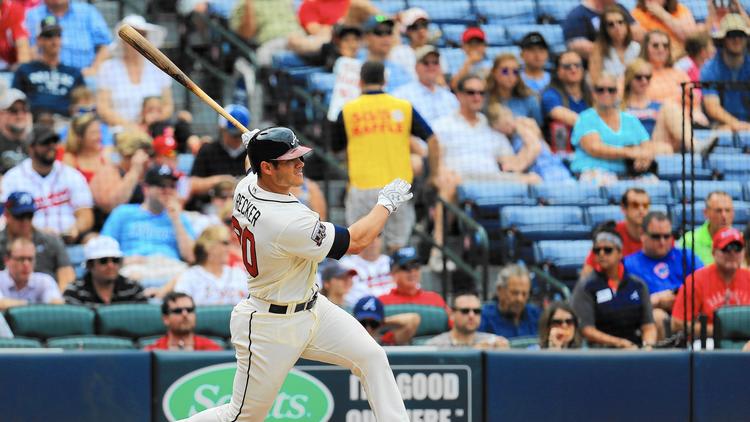
Well, that was neat. At the time of his acquisition, Recker had been one of the league’s worst hitting players in every season he’d reached the majors. His slash lines read like those of a pitcher:
2011: .176/.333/.235
2012: .143/.263/.245
2013: .215/.280/.400
2014: .201/.246/.374
2015: .125/.239/.213
2016: .278/.394/.433
There are breakouts, and then there’s that.
Of course, it wasn’t really a breakout as much as just a really good small sample of success. His 112 plate appearances in Atlanta were successful, but they don’t rewrite the history of a 33 year old catcher who shouldn’t be expected to be a key component of the roster going forward. Aside from cutting his strikeouts and going opposite-field more (two not inconsequential adjustments that shouldn’t be fully discounted), he was more or less the same hitter he’d been before, just with better results when it came to balls avoiding gloves. Behind the plate, he’s a decent pitch blocker and doesn’t embarrass himself when it comes to holding runners, but the pitch framing metrics are so poor, you imagine they wouldn’t be much worse if he were trying to frame strikes as balls.
What’s Next?
Pierzynski is gone, and with Recker eligible for arbitration, it’s easy to see the team declining to offer him a contract. They could bring Recker back on a minor-league deal, but in my opinion, the backup catcher for 2017 Opening Day is not currently on the 40-man roster. Flowers is a competent starter for now, but the team needs something to complement him, preferably someone who can hit righties and be acceptable on defense. If you’re wondering about Blake Lalli, a AAA catcher called up at the end of 2016 to give Freddie Freeman some rest at 1B, he’s not likely the answer. Lalli hasn’t been an average hitter at the minor league level, and his pitch framing aspires to be as good as Anthony Recker, who is actually younger than Lalli by 3 months. The remotely serious prospects at the position aren’t on the cusp of the majors, so expect Atlanta to pursue a catcher via free agency or trade during the 2016-17 offseason.

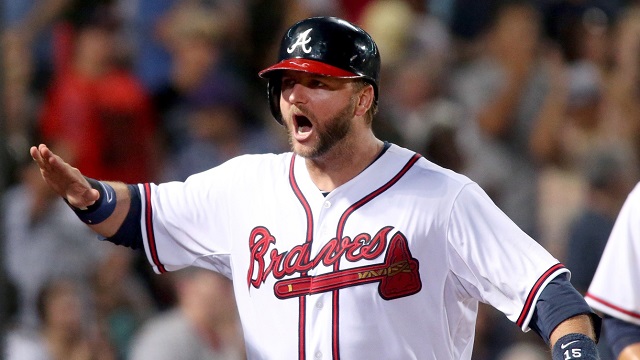
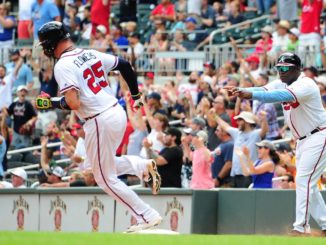

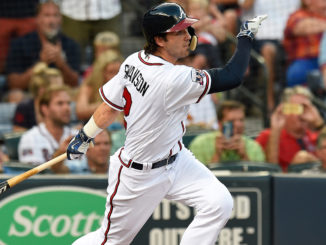
Leave a Reply